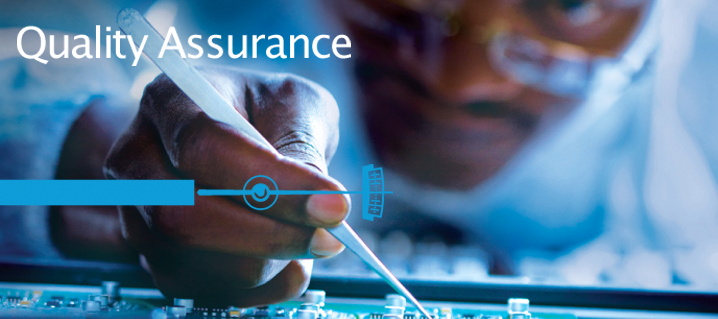Expertise in the incorporation of a reasonable number of distinct skills and the ability to manage multiple design constraints are the two main things required for designing and developing electronic systems for the industry. Important skills like robust domain knowledge and experience, skilled design implementation and verification, and leveraging the best in-class design methodologies and tools, are a must have for design teams.
The term Electronic System Level (ESL) Design was first defined by Gartner Dataquest as:”the utilization of appropriate abstractions in order to increase comprehension about a system, and to enhance the probability of a successful implementation of functionality in a cost-effective manner.” Let’s find out on how to really go about designing an electronic system.

An Outline
Typically in Electronics System and Product Design, the system or the product is to be thought of as a concept to be created. L R Subramanyan, Chairman at Visiting faculty at IIT-B & Chairman of Seto Teknolog Pvt Ltd says, “First and foremost, the ‘what’, ‘why’ and ‘how’ aspects of the concept to be created need to be analyzed.” Next, a proof-of-concept must be developed followed by developing something like a bread-board design or the circuit design, which would eventually show that the proposed idea does work. Subsequent to that, the next stage would be the product development stage where there would be some specifications or some requirements that must be met.
Subramanyan notes, “If it’s your own product or system, it would be your own specifications. If it’s a contract based product, the specifications would depend on the customer.” After having completed the basic design and getting it principally approved by the user or the client, the next step would be assembling the whole system and perform a verification of it to check if it’s working to the final specifications.
Perhaps, an additional certification by government bodies would also be required in some cases. Finally, after all these processes are accomplished, we enter the stage to prepare for the production of the pilot batch and re-run the product.
Finalising the design

Finalising the design is extremely important as the design should have achieved the desired output from the product, and it must be clear and jotted down to clear any confusion. To assist in finalizing the design, various members of the organization could chip in like the marketing professionals, engineers and manufacturers. “Bigger or mega projects would include more people such as the test team, industrial designers, logistics and support,” believes Subramanyan. The final go or no-go decision must be made. After the decision is made to go ahead with the project, the reviews, evaluation tests and field tests are performed. Finally, this phase is completed when the design is finished, appropriately tested and is hence manufacturable. Therefore, the design phase is very critical.
In the production hand-off stage, having completed the design of the product, it’s handed over to the manufacturer for production. Once the design team has gone through everything, the design is handed over to production house – large scale or small scale – depending on the type of project. “It’s important to ensure that all the open issues are closed(especially in the case of embedded related projects) and the design is validated,” notes Subramanyan.
Again, all the marketing professionals and engineers come into the picture to decide a suitable time for the product to be released. Citing an example, Subramanyan says, “In the case of refrigerators, the slack season would be monsoon. So it’s important that the production is minimum during the slack season and maximum during the summer season.”
He further adds, “The components that go in the making of the product must also be very carefully chosen.” Most of the components are easily available where as few of them are not easily available over-the-table. These two things are the most important things to be taken care of particularly in this field of electronics.
Next step would be the quality assurance of the design. Tests for integration, environmental survival and qualification with respect to the product are performed. Finally, the customer agrees and signs the contract after he’s satisfied and his requirements are met.
Select Components Wisely

To elaborate on why the electronic components must be picked carefully for a product, the electrolytic capacitors would be a good example to consider. Power supplies contain lots of electrolytic capacitors. Unless the highly reliable electrolytic capacitors are used, the normal capacitors available in the market have a low shelf-life. Subramanyan points out, “For a 100 micro Farad capacitor, the capacitor contains a film inside formed at the time of manufacturing. The variations in tolerance for electrolytic capacitors range from -50 per cent to 100 per cent. So the capacitor could be 50 micro Farad or it could even be 200 micro Farad at the time of actual usage.”
For normal capacitors, he says, “The manufacturing tolerance is 10 per cent. If the product is made using these kind of electrolytic capacitors and has not been used for more thank one year and then subsequently used, the capacitor is no longer an electrolytic capacitor. It may be just a 2 or 3 micro farad capacitor but not 100 micro Farad.” So if the power supply is kept as a spare and has not been used for a long time, they would not work immediately when fed power. The same response is not achieved as desired similar to an ideal power supply.
These are the issues that the customer would not understand. According to the customer, the equipment has failed.
A Good Design is Equal to a Good Set of Requirements

A good set of requirements for a design has a number of characteristics. The most important characteristic is that the need or the purpose of the product must be met. In the case of the customer, it means whether it meets his requirements or specifications. If it covers all the requirements, it’s complete. It must also be unambiguous. There must be only one possible interpretation.
“If it’s ‘A’, there must be just an ‘A’, there cannot be a ‘B’,” notes Subramanyan.
Consistency is an important factor. There must be no conflicts between the requirements. It must also be verifiable, traceable and modifiable. “Especially considering today’s requirements in embedded design, people expect last minute changes in the program. For example, once the PCB is made, it’s obviously difficult to make changes in the basic circuit. Therefore, it must be easy to add new requirements,” says Subramanyan. He adds, “At the end of the day, it’s important to find out what the customer requires not what he wants.” This is one major issue that needs the most attention.
Analog vs Digital
Another area of consideration in the electronics design would be the analog vs. digital circuits. While designing the circuit, the amount of analog or digital that must be incorporated is not an easy task to decide. “It’s one area of trade-offs that electrical/electronic engineers consider while designing circuits,” believes Subramanyan.
Is it better to build an analog filter in the front end or would it be more appropriate to do digital signal processing to do the filtering?, Can an analog amplifier increase the signal magnitude sufficiently to reducing the amount of processing later?, Is reprogramming and reconfiguring the processing important enough to put functions in software and remove the analog circuits? – are the questions that need to be addressed and it’s important to put in a lot of thought into these questions. All of these trade-offs aim at reducing cost, unnecessary functions, development work and circuitry.
Quality is of paramount importance

Image Courtesy: http://www.tub.za.net
As far as electronics is concerned, it should not be an after thought. Quality must be built-in right from the concept stage upto the final stage. The Parettos’ principal which says “Optimal of the sum is not equal to the sum of the optimals,” must be kept in mind while doing optimization. The design and development of new products requires the combination of electronic engineering knowledge with creativity, innovation skills and business know-how. Electronic Product Design is an ever-growing and a highly-demanding consumer driven market.
The author is a tech correspondent at EFY Bengaluru. This article is based on a talk, at Electronics Rocks 2012, by Mr. L R Subramanyan, Visiting Faculty at IIT-B, and Chairman of Seto Teknolog Pvt. Ltd.






